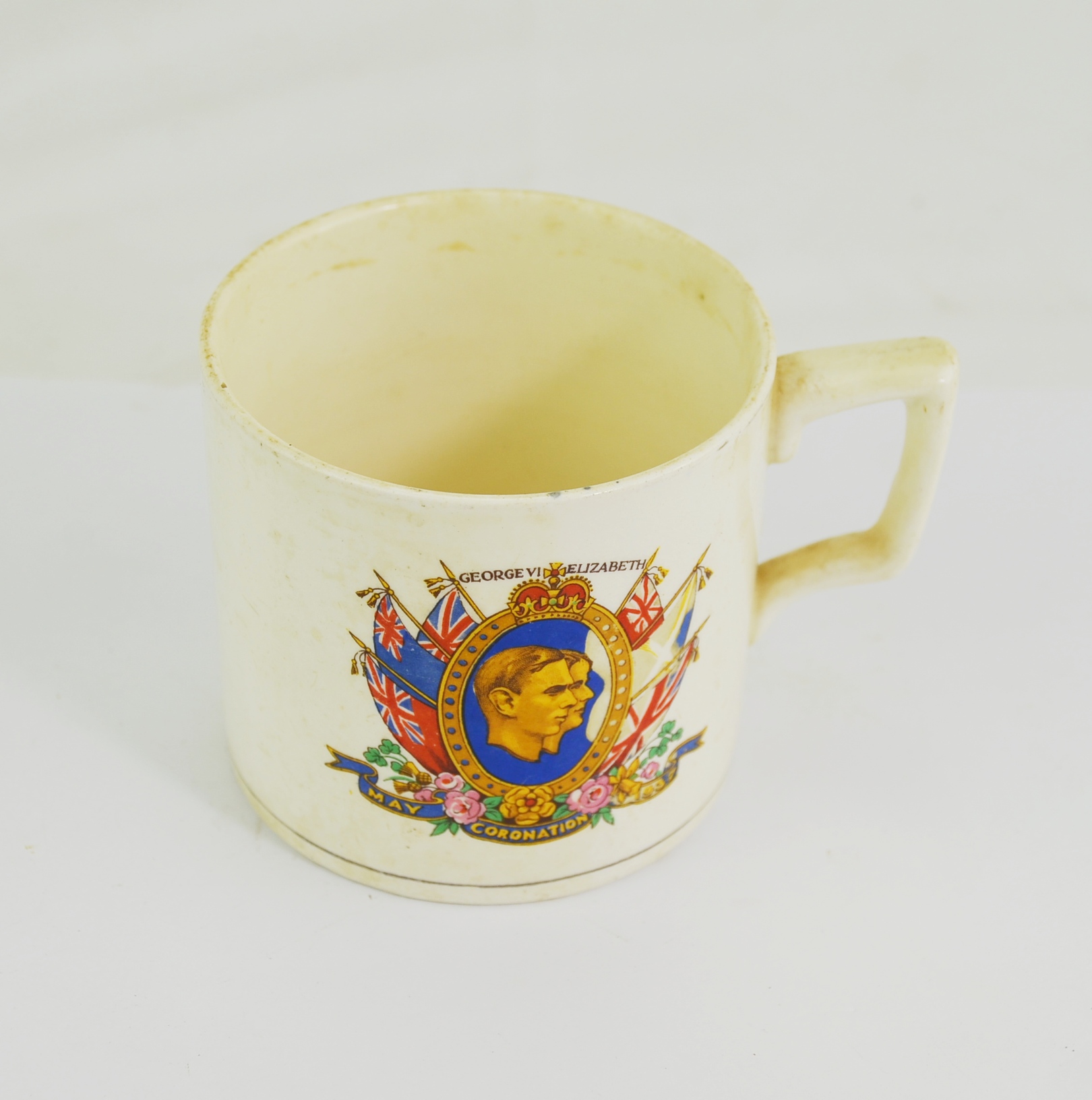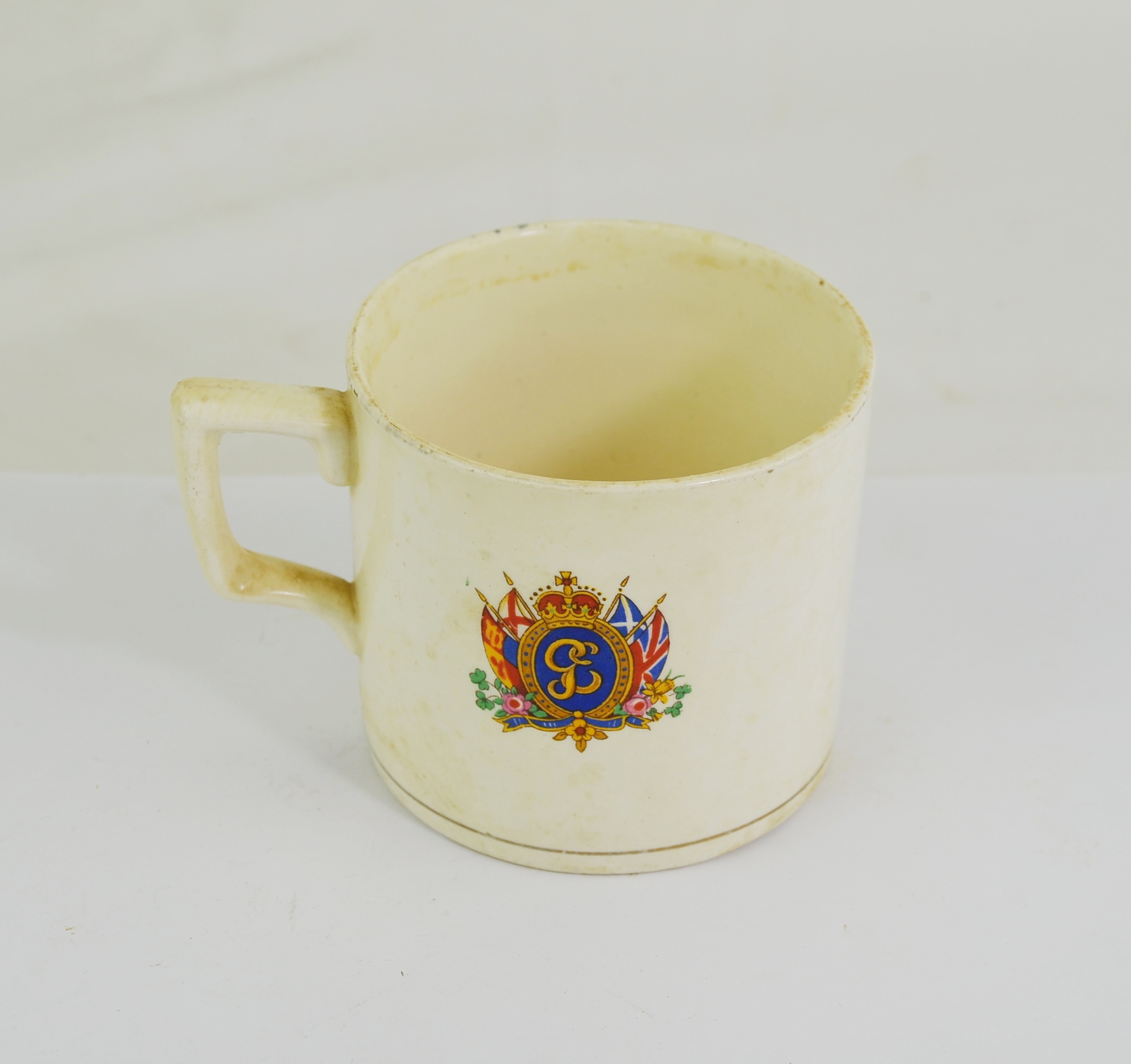The Coronation of King George VI and Queen Elizabeth 1937 Mug is a commemorative piece that was produced to celebrate the coronation of King George VI and Queen Elizabeth, which took place on May 12, 1937. Such mugs were part of a broader tradition of producing memorabilia to mark significant royal events, particularly coronations, in the United Kingdom.
Historical Context:
Coronation of King George VI:
King George VI ascended to the throne unexpectedly after his brother, Edward VIII, abdicated in December 1936. The abdication crisis was a significant event in British history, and George VI’s coronation was seen as a moment of stability and continuity for the monarchy.
The coronation took place at Westminster Abbey and was a grand occasion, attended by royalty, dignitaries, and representatives from across the British Empire. It was also one of the first major royal events to be broadcast live on radio, bringing the ceremony into homes across the nation.
Commemorative Items:
Commemorative mugs, along with other items like plates, coins, and badges, were commonly produced for royal events. These items were often affordable and widely distributed, making them accessible to a broad audience.
The production of such memorabilia became especially popular during the reign of Queen Victoria and continued through the 20th century. The mugs were often kept as keepsakes or souvenirs and are now collectibles.
Description:
Design:
The 1937 coronation mug typically features a portrait of King George VI and Queen Elizabeth (later known as the Queen Mother) on the front, often in color or sepia tones. The portraits are usually surrounded by symbolic elements such as the royal coat of arms, crowns, and banners.
The reverse side of the mug might include the date of the coronation, the names of the king and queen, and sometimes a short inscription or dedication commemorating the event.
Many designs also incorporate decorative flourishes, such as floral patterns, ribbons, or laurel wreaths, which were traditional motifs symbolizing royalty and celebration.
Material:
These mugs were typically made from porcelain or earthenware. The quality of the material could vary depending on the manufacturer, with some mugs being more finely crafted than others.
The glazing and finish were often glossy, giving the mugs a bright and celebratory appearance. Some might have gilded edges or accents, adding a touch of luxury to the piece.
Manufacturers:
Several pottery and porcelain manufacturers in the UK produced coronation mugs for George VI, including renowned names such as Wedgwood, Royal Doulton, and Staffordshire potteries. Each manufacturer brought its own style and craftsmanship to the mugs, resulting in a wide variety of designs.
Some mugs were mass-produced and affordable, while others, made by prestigious companies, were more limited in number and higher in quality.
Significance:
Cultural and Historical Value:
The coronation mug serves as a tangible connection to a significant moment in British history. King George VI’s reign was marked by the challenges of World War II and his leadership during this time was greatly valued by the British people.
The mug is a reminder of the public’s affection and respect for the monarchy, particularly in a time of uncertainty following the abdication crisis.
Collectibility:
Coronation mugs from 1937 are popular among collectors of royal memorabilia. Their value depends on factors such as the manufacturer, condition, and rarity. Mugs made by well-known manufacturers or with unique designs are particularly prized.
These mugs are often found in antique shops, auctions, and online marketplaces, and they continue to be cherished by those with an interest in British history and the royal family.
The Coronation of King George VI and Queen Elizabeth 1937 Mug is more than just a drinking vessel; it is a piece of historical memorabilia that captures the spirit of a nation at a pivotal time. It reflects the public’s celebration of their new king and queen and the enduring tradition of commemorating royal events through everyday objects.





